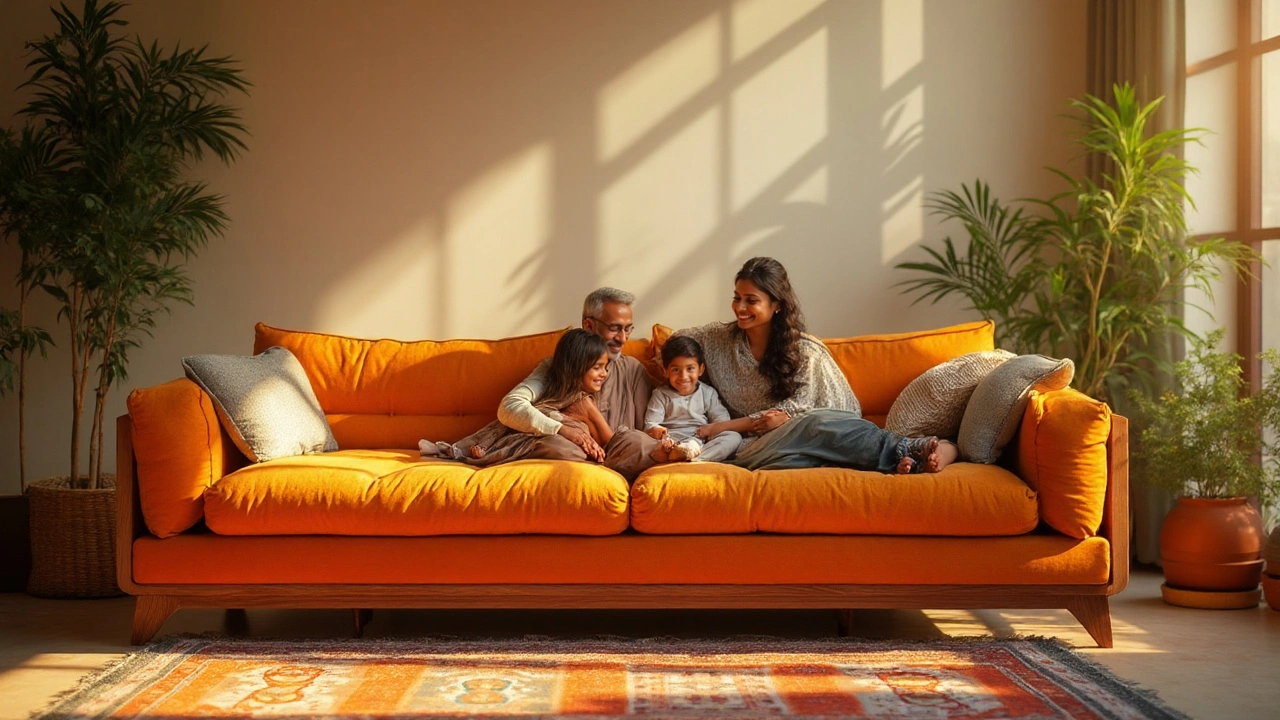Long-Lasting Sofas: Choose, Protect, and Keep Them Fresh
When you spend a good chunk of money on a couch, you want it to stick around. A long-lasting sofa isn’t a myth; it’s about smart buying and simple habits. Below you’ll find the key traits to look for and everyday tricks that stop wear before it starts.
What Makes a Sofa Built to Last?
First, check the frame. Hardwood like oak or maple holds up much better than cheap particle board. If the legs are screwed in instead of glued, you’ve got a sign of quality. Next, examine the cushions. High‑density foam paired with a supportive spring core keeps the seat from flattening quickly. Look for removable covers – they’re easier to clean and replace.
Fabric matters, too. Natural fibers such as linen or tightly woven cotton resist stains better than low‑grade polyester. If you have pets or kids, consider a performance fabric like microfiber; it’s made to shrug off spills. Don’t forget the legs – metal or solid wood legs add stability and keep the sofa from wobbling over time.
Simple Habits to Extend Sofa Life
Cleaning is the easiest way to lengthen a sofa’s life. Vacuum the upholstery weekly to pull out dust that can grind down fibers. When a spill happens, blot it fast with a clean cloth; scrubbing only makes the stain sink deeper. For fabric sofas, a gentle upholstery shampoo once every few months keeps colors bright.
Use a couch cover or a throw in high‑traffic spots. Covers protect against pet hair, accidental knocks, and sun‑fade. They’re cheap, easy to wash, and you can swap them out for a fresh look whenever you feel like it. Speaking of sun, keep your sofa out of direct afternoon rays – UV light breaks down both fabric and wood.
Rotate cushions regularly. Flip side to side or front to back every few weeks. This balances the wear and stops one spot from sinking. If your sofa has loose screws, tighten them with a simple screwdriver once a year. A bit of maintenance prevents squeaks and wobble.
Storing a sofa for a long time? Keep it in a dry, climate‑controlled space. Use breathable covers instead of plastic sheets, which trap moisture and cause mold. If you must move it through tight corners, protect the arms with moving blankets to avoid dents.
Finally, think about the future. When the sofa finally reaches the end of its prime, you can often re‑upholster it. A fresh fabric or new cushions can give an old frame a second life, saving money and reducing waste.
Choosing a long-lasting sofa is a mix of checking the build, picking smart fabrics, and staying on top of basic care. Follow these tips, and your couch will stay comfy and stylish for years to come.
Sofas That Don’t Sag: How to Choose a Durable Couch for Your Home
Discover which sofas don’t sag and what features to look for to keep your couch looking and feeling great for years. Get specific tips and real-life insights.
What Sofa Material Lasts the Longest?
When choosing a sofa, longevity is a crucial factor. Materials like leather and tightly woven fabrics tend to withstand wear and tear effectively. Solid construction techniques can also contribute to a sofa's durability. Additionally, maintenance and care play significant roles in extending a sofa's lifespan. This article explores various factors that determine the longevity of sofa materials, helping you make a more informed choice.






